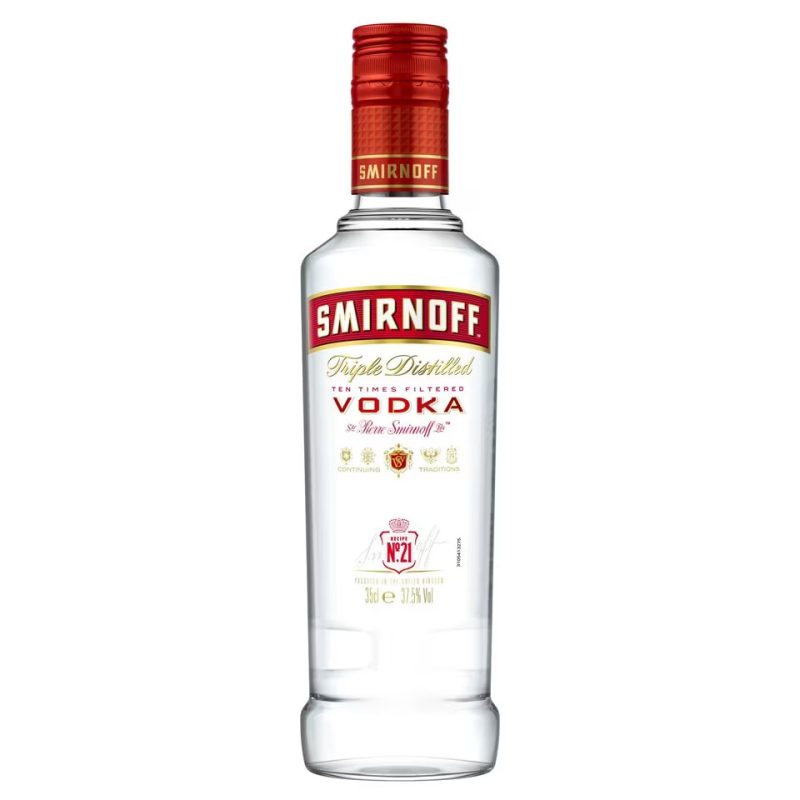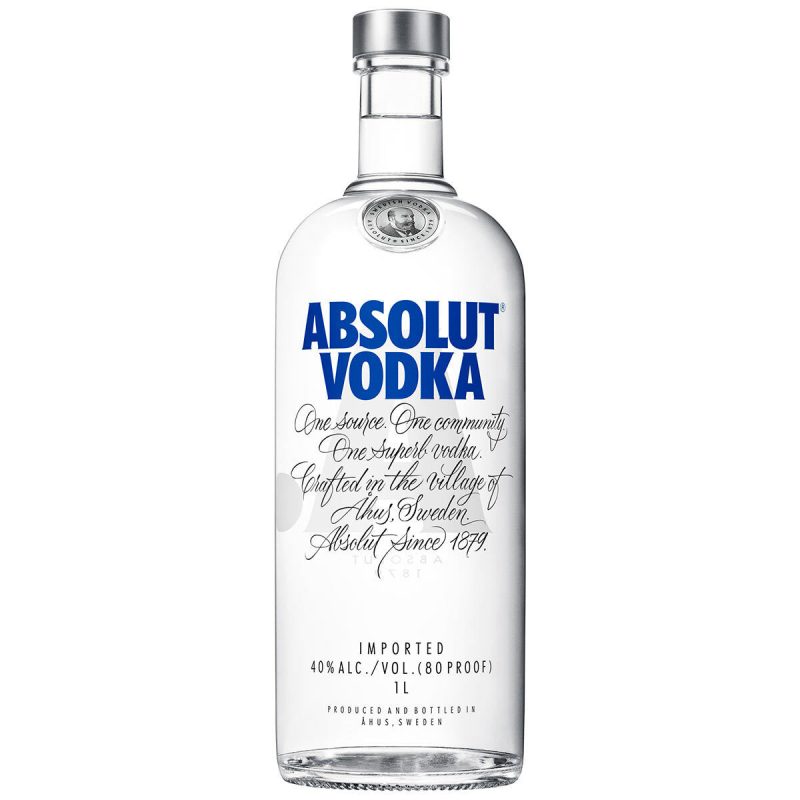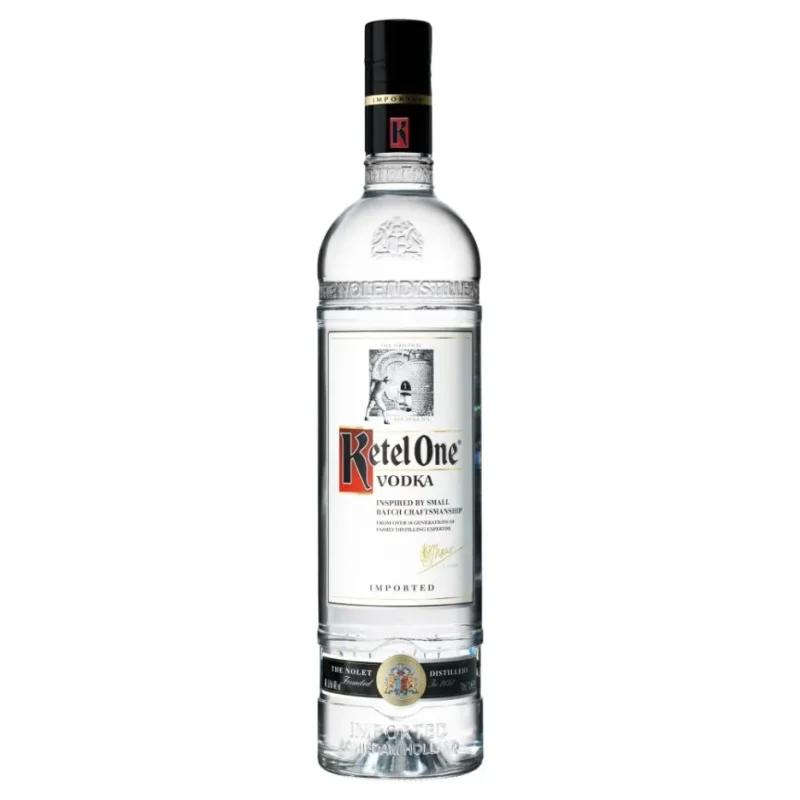Ever wondered what sorcery turns humble ingredients into that crisp, clean liquid gold we call vodka? Whether you're a cocktail connoisseur, a science geek, or just someone who’s ever asked, “How the heck is vodka distilled?”, you’re in the right place. Get ready to dive into a spirited journey through bubbling fermenters, sizzling stills, and a process so fascinating it might just make your next happy hour even more epic.
How Vodka Is Distilled Table of Contents
The Vodka Revolution: A Brief History and Overview
Ingredients: Where It All Begins
Fermentation: The First Spark of Magic
The Distillation Process: Turning Mash into Masterpiece
Modern Vodka Distillation Techniques: Tradition Meets Innovation
Flavored Vodka: Experimenting with the Distillation Process
The Role of Filtration: Achieving That Perfect Smoothness
Behind the Scenes: Tools, Talent, and Tech in Vodka Distillation
Sustainability and Ethics: Distilling Responsibly
Mythbusting: Debunking Common Vodka Distillation Misconceptions
Resources and Community Support: Your Next Steps
From Grain to Glass: The Journey of Vodka in Detail
Vodka in the Modern World: Trends and Innovations
Expert Tips for the Aspiring Vodka Enthusiast
FAQs on Vodka Distillation: Your Questions Answered
The Future of Vodka Distillation: Innovation on the Horizon
Where to Go From Here: Embrace the Spirit of Exploration
Looking For The Best Vodka? You'll Love These Vodka Guides...
The Vodka Revolution: A Brief History and Overview
Vodka—often celebrated as the life of the party—has been around longer than you can say “Cheers!” Originating from Eastern Europe, this iconic spirit has evolved far beyond its humble beginnings. While early distillers used potatoes, modern vodka can be made from grains, corn, even grapes. Today’s distillation methods blend age-old traditions with modern technology, creating a product that satisfies both purist palates and those chasing the latest trend.
Historically, vodka was used for medicinal purposes and religious ceremonies, but fast-forward a few centuries, and it’s now the superstar of cocktail menus worldwide. This transformation from ritual spirit to party staple is due in no small part to the meticulous distillation process—a craft that marries science and art in each drop.
It’s interesting to note that while vodka is best known for its neutral flavor profile, this so-called “blank canvas” offers endless possibilities. The secret? Its refined distillation process, which removes impurities while retaining just enough character to deliver smooth, satisfying sips.
Ingredients: Where It All Begins
Before we get into the nitty-gritty, let’s start at the very beginning: the ingredients. Vodka’s fundamental components are surprisingly simple—water and a carbohydrate source (usually grains, potatoes, or sometimes even sugar beets). But don’t let the simplicity fool you; every ingredient plays a crucial role in the final flavor and quality.
Water: The magic elixir. Vodka is roughly 40% water, and the purity of this water is essential. Distillers often source water from pristine, natural springs, ensuring that every drop of vodka has a crisp, clean base. Think of it as the canvas on which the flavor masterpiece is painted.
Best Budget Vodkas Ranked
Grains and Beyond: The choice of carbohydrate determines the overall profile of the vodka. While rye, wheat, and corn are popular choices for their subtle flavors, some distilleries prefer potatoes or even grapes to introduce a unique twist. Not only do these ingredients affect flavor, but they also influence the texture and smoothness of the final product.
These simple ingredients undergo a transformation that is both scientific and, dare we say, a touch magical. It’s a process where nature meets technology, and tradition meets innovation.
Fermentation: The First Spark of Magic
Once the ingredients are combined, the next stage is fermentation—a process that many compare to the culinary equivalent of a rock concert. Yeasts get involved, and they have one job: to convert those sugars into alcohol. This biochemical process is what sets the stage for the distillation that follows.
During fermentation, the mixture (often referred to as the “mash”) is allowed to sit and bubble away in controlled tanks. It’s here that the yeast works its wonders, creating alcohol and releasing carbon dioxide. The art lies in timing—allowing the fermentation to reach just the right level of maturity before moving on to distillation.
For millennial and Gen Z enthusiasts, think of fermentation as the ultimate pre-party warm-up. It’s where all the heavy lifting happens on a microscopic scale, setting the vibe for what’s about to become the life of the party in your glass.
Not only is fermentation crucial for producing alcohol, but the conditions under which it occurs—temperature, pH, and even the type of yeast used—can subtly influence the flavor profile of the vodka. It’s all in the details, and the best distillers know that perfection is found in precision.
The Distillation Process: Turning Mash into Masterpiece
Now comes the main event: distillation. This is where the fermented mash is heated, and the magic of turning it into a high-proof spirit occurs. In basic terms, distillation separates alcohol from the water and other components by exploiting differences in boiling points. But don’t be fooled by the simplicity of the theory—this process is a finely tuned dance of temperature control and timing.
Step 1: Heating the Mash
The process kicks off by heating the fermented mash in a still. This heating causes the alcohol, which boils at a lower temperature than water, to vaporize first. Imagine the mash turning into a cloud of alcohol vapor, leaving behind water and other unwanted byproducts.
Distillers take pride in their ability to achieve and maintain the perfect temperature. Too hot, and you risk getting unwanted flavors and compounds in your vodka. Too low, and you won’t vaporize enough alcohol to make an exquisite spirit. It’s a balancing act that requires precision and experience.
Step 2: Condensation and Collection
Once the alcohol vapor is separated, it’s directed through a cooling system where it condenses back into liquid form. This liquid, now with a much higher alcohol concentration, is collected and sometimes redistilled for further purity. The condensation process is akin to capturing lightning in a bottle, transforming vapor into that clear, potent liquid we all recognize.
Some distilleries perform multiple distillations—a process known as “triple-distilling” for certain premium vodkas—to achieve an even higher level of purity and smoothness. Each pass through the still removes more impurities and refines the flavor, ensuring that only the best of the best makes it to your glass.
Step 3: Filtration, Filtration, Filtration
The freshly distilled alcohol isn’t quite ready for the party just yet. It goes through a rigorous filtration process where it’s passed through charcoal or other materials. This filtration step is critical because it removes any residual impurities and harsh flavors, leaving behind a spirit that’s remarkably smooth and clean.
For those in the know, the type of filtration can be a signature of a brand’s quality. Vodka enthusiasts often debate whether charcoal filtering or more modern techniques like using quartz sand yield a better-tasting spirit. It turns out that there’s a lot more science and soul in distilled vodka than meets the eye.
The final product? A spirit that’s so neutral it might make you wonder how it can possibly stand out in a cocktail. But its very neutrality is what allows it to be the perfect base for endless culinary creativity.
Modern Vodka Distillation Techniques: Tradition Meets Innovation
Today’s vodka distillation methods are a fusion of time-honored practices and modern technological advances. Traditional pot stills share the stage with continuous column stills, and many distilleries now use state-of-the-art equipment to achieve consistent quality and efficiency.
Pot Still Distillation: This classic method involves heating the mash in a pot still, which is then cooled to collect the distilled alcohol. Pot stills are revered for their ability to produce spirits with a distinct character, though they may retain more congeners—subtle flavor compounds—that add personality to the vodka.
Column Still Distillation: In contrast, column stills allow for a continuous process of distillation. They are more efficient and can achieve extremely high levels of purity by repeatedly separating the alcohol from impurities. Many mass-market vodkas are produced using this method, which results in a clean, neutral spirit.
Even within column still systems, innovative tweaks like advanced temperature controls, automated feedback loops, and eco-friendly designs are reshaping the industry. These advancements ensure that every bottle of vodka is distilled to perfection, meeting the high expectations of a younger, more discerning audience.
The blend of old-school craftsmanship and new-school technology highlights an exciting trend: distilleries are not only keeping tradition alive but are also reinventing it for a world that craves both authenticity and efficiency.
Flavored Vodka: Experimenting with the Distillation Process
While plain vodka is a masterpiece in its simplicity, flavored vodkas add an extra layer of fun and creativity to the mix. It might seem counterintuitive—after all, vodka is prized for its neutrality—but that very neutrality makes it the perfect canvas for a burst of flavor.
Infusion Techniques: Traditional flavoring methods involve infusing the distilled spirit with fruits, herbs, or spices. The infusion process may occur before, during, or after distillation. For example, some distilleries add botanicals directly to the mash, while others prefer a post-distillation steep to create vibrant profiles like citrus, berry, or even spicy varieties.
Redistillation with Flavors: Some producers opt for redistilling the spirit with flavoring agents. This method integrates the flavors more deeply into the vodka, ensuring consistency and a balanced taste. It’s like remixing a classic song with fresh beats—nostalgic yet totally in vogue.
For the trendsetters among us, flavored vodka represents both tradition and experimental artistry. It allows craft distillers to showcase their creativity while still honoring the meticulous processes that define high-quality vodka.
The Role of Filtration: Achieving That Perfect Smoothness
Filtration is arguably the unsung hero of vodka production. Even after carefully executed distillation, the liquid may still harbor traces of impurities that can dull its signature smoothness. This is where modern filtration techniques step in, ensuring every sip is as clean as your freshest Insta story.
Modern distilleries use a variety of filtration methods. Activated charcoal is an industry staple—it adsorbs unwanted compounds and delivers a spirit that’s exceptionally refined. Some brands even use cutting-edge materials like quartz or other proprietary media to filter their vodka.
The goal is to strike the perfect balance: remove undesirable components while retaining the delicate flavors and characteristics that set one brand apart from another. The result is a vodka that envelops your palate in a smooth, almost velvety experience, leaving you with a clear head and a taste you’ll want to explore again and again.
Behind the Scenes: Tools, Talent, and Tech in Vodka Distillation
Let’s lift the curtain for a moment and appreciate the unsung heroes behind every bottle of vodka—the distillers. These modern alchemists combine science, creativity, and a passion for perfection. Their toolkits are packed with high-tech gear and centuries-old secret recipes that have been honed, tweaked, and perfected.
Stills and Boilers: The centerpiece of any distillery is the still—a meticulously engineered vessel that captures the art of separation. Whether using a pot still or a column still, these machines are designed to maintain precise temperatures and pressures, ensuring that each batch meets the rigorous quality standards.
Lab Equipment: Quality control is paramount. Before any vodka reaches bottling, it undergoes extensive lab testing. Advanced chromatography techniques, spectrometry, and taste panels work in concert to guarantee that every drop is flawless. It’s a perfect blend of art and science, where data meets the palate.
Automation and Analytics: In a nod to the tech-savvy generation, many distilleries now incorporate digital controls that monitor every step of the process—temperature, humidity, and even the chemical composition of the mash. This integration of technology not only ensures consistency but also opens up a treasure trove of data for continuous improvement.
The fusion of traditional craft with modern innovation is what makes the world of vodka distillation so captivating. It’s a field where every batch of vodka carries the legacy of historic methods while embracing the efficiencies of futuristic technology.
Sustainability and Ethics: Distilling Responsibly
In today’s world, sustainability isn’t just a buzzword—it’s a way of life, even in the realm of spirits. Distilleries are increasingly aware of their ecological footprint and are taking bold steps to distill responsibly.
Many modern distilleries use locally sourced ingredients, reducing transportation emissions and supporting local farming communities. Water recycling systems, energy-efficient stills, and eco-friendly packaging are just a few ways the industry is stepping up its game.
For a generation that values authenticity and environmental stewardship, these sustainable practices add another layer of appeal to the vodka you pour. It means that every time you enjoy a cocktail, you’re not only savoring exceptional flavor but also supporting a cleaner, greener planet.
Mythbusting: Debunking Common Vodka Distillation Misconceptions
Vodka’s reputation for being flavorless is both its blessing and its curse, leading to plenty of myths and misconceptions. Let’s set the record straight:
Myth 1: Vodka is Just Alcohol and Water
While it’s true that vodka is a neutral spirit, achieving that neutrality is no accident. The distillation and filtration processes are meticulously designed to remove impurities while retaining a delicate balance that gives vodka its signature mouthfeel.
Myth 2: More Distillation Means Better Vodka
Not necessarily. Over-distillation can strip away not only impurities but also the subtle characteristics that define a vodka’s uniqueness. It’s all about balance—achieving a high proof while still maintaining a touch of personality.
Myth 3: Vodka is Flavorless
The reputation for neutrality actually makes vodka incredibly versatile. It’s the perfect base for creative cocktails, culinary infusions, and even experimental pairings. Behind its clean profile lies a world of nuance that only a refined distillation process can deliver.
By debunking these myths, we not only gain a deeper appreciation for the craft of vodka distillation but also understand why this spirit continues to captivate taste buds worldwide.
Resources and Community Support: Your Next Steps
Ready to further explore the fascinating world of vodka distillation? Whether you’re an aspiring distiller, a cocktail enthusiast, or just someone curious about where your favorite spirit comes from, there’s a wealth of resources available. Check out distillery tours, online forums, tasting events, and expert-led workshops that provide behind-the-scenes insights.
Social media communities on platforms like Instagram, TikTok, and Reddit are brimming with content—from distiller interviews to DIY cocktail tutorials—that cater to a modern audience hungry for authenticity and adventure. Following your local craft distilleries online can also give you an insider’s look at sustainable practices, innovative techniques, and the passion that goes into every bottle.
If you’re considering venturing into distillation yourself, many educational institutions and specialized programs offer courses in fermentation science, distillation engineering, and beverage management. By connecting with these communities and learning from industry experts, you’re not only expanding your knowledge but also joining a vibrant network of like-minded enthusiasts.
Empower your curiosity and embrace the journey—nature, science, and a bit of creative magic all converge in the art of vodka distillation.
From Grain to Glass: The Journey of Vodka in Detail
Let’s recap the entire adventure from raw ingredients to that final, irresistible pour:
- Sourcing: It all starts with the careful selection of ingredients—pure water and a chosen carbohydrate base, be it grains, potatoes, or other sources. Quality here is non-negotiable, as it sets the stage for everything that follows.
- Fermentation: Next up, the ingredients mingle with yeast in controlled tanks, scientifically converting sugars into alcohol. Patience and precision during this phase ensure a robust foundation.
- Distillation: The heated mash produces alcohol vapor that’s skillfully condensed back into liquid form. This stage, carried out in either pot or column stills, harnesses the power of heat, pressure, and time—a true marvel of chemical wizardry.
- Filtration: A meticulous filtration process follows, scrubbing away impurities and unwanted compounds. The resulting spirit is smooth, consistent, and uniquely ready for customization.
- Finishing Touches: Whether it’s the introduction of subtle flavors or additional passes through the stills for extra purity, these final steps bring the vodka to perfection.
By the end of this extensive journey, what emerges is a crystal-clear spirit, celebrated for its smoothness and versatility—a product of both ancient tradition and cutting-edge science.
Vodka in the Modern World: Trends and Innovations
In our fast-paced, ever-changing world, even vodka isn’t immune to evolution. Today, the industry is witnessing a surge of innovative practices meant to cater to a new generation of consumers. From eco-friendly production methods to artisanal batches that hark back to traditional techniques, modern vodka distillation is all about blending innovation with heritage.
Social media has played a big role in this transformation. Brands are sharing behind-the-scenes glimpses of their distilleries, engaging in quirky collaborations, and even hosting virtual tasting sessions. These efforts not only inspire younger audiences but also demystify the process of distillation, making it accessible and engaging.
Moreover, the trend of limited-edition releases and small-batch productions has introduced an element of exclusivity—a factor that resonates deeply with both millennials and Gen Z. These batches, often produced in collaboration with local artisans or influenced by regional ingredients, show that innovation knows no borders.
As technology continues to evolve, expect to see even more refined processes that incorporate sustainable practices and digital precision. The future of vodka distillation looks bright, clean, and refreshingly ahead of its time.
Expert Tips for the Aspiring Vodka Enthusiast
If you’re reading this, you might already be imagining your own mini distillery in your garage—or at least trying to impress your friends with your newfound knowledge. Here are some practical tips and fun facts to get you even more intrigued by the world of vodka:
- Experiment with Flavors: While true vodka is celebrated for its neutrality, don’t shy away from experimenting with mild infusions at home. Try adding citrus zest, berries, or even a hint of spice. Just remember: a little goes a long way.
- Understand the Science: Even if you’re not planning on becoming a master distiller, getting a grasp on the basics of fermentation and distillation can enhance your appreciation of your favorite cocktail. Science meets art in every bottle!
- Visit a Distillery: Nothing beats a personal tour. Many distilleries now offer interactive tours where you can see the process firsthand—and trust us, it’s way more interesting than you might expect.
- Read the Label: Next time you pick up a bottle of vodka, take a minute to read the label. The details can tell you a lot about the production method, the ingredients used, and the story behind the brand.
- Join a Tasting Event: Whether online or in-person, tasting events provide a fantastic opportunity to learn from experts, compare flavors, and dive deep into the nuances that make each vodka unique.
These tips aren’t just about enhancing your knowledge—they’re an invitation to join a community of enthusiasts who revel in the details of flavor, process, and innovation.
FAQs on Vodka Distillation: Your Questions Answered
Below are some frequently asked questions that capture the essence of vodka distillation and address common curiosities:
1. What exactly is the role of fermentation in vodka production?
Fermentation is critical—it’s where yeast converts sugars into alcohol, laying the groundwork for the distillation that follows. It’s the first step in the transformation from raw ingredient to refined spirit.
2. Why do some vodkas undergo multiple distillations?
Multiple distillations help achieve a higher purity level by removing impurities and unwanted congeners. This process results in a smoother, more refined spirit without sacrificing subtle flavor nuances.
3. How does filtration improve the quality of vodka?
Filtration is key to removing residual impurities and harsh compounds. By passing the vodka through activated charcoal or other media, producers create a clean, smooth spirit that enhances cocktail experiences.
4. Is vodka really made from potatoes?
While potatoes are one of the traditional bases for vodka, modern variants can be produced using grains, corn, or even grapes. The choice of base influences the texture and subtle flavor elements.
5. What makes a vodka “premium” in terms of distillation?
Premium vodkas typically undergo multiple distillations and advanced filtration processes, using high-quality, locally sourced ingredients and state-of-the-art technology to ensure exceptional smoothness and character.
6. How important is the water source in vodka production?
Extremely important. Pure, high-quality water is the foundation upon which the entire spirit is built. Distilleries often use water from natural springs to guarantee a clean and crisp taste.
7. Can I experience the distillation process firsthand?
Absolutely. Many distilleries offer tours and tasting events where you can see the process up close and learn from experts. It’s a fun, immersive way to appreciate the craft.
The Future of Vodka Distillation: Innovation on the Horizon
Looking ahead, vodka distillation is poised to become even more innovative. We're already seeing trends like sustainable production techniques, greater transparency in ingredient sourcing, and even digital innovations that allow consumers to track the origin of their favorite bottle. The spirit of experimentation is alive and well, blending creative energy with cutting-edge technology.
Emerging distilleries are exploring ways to further reduce environmental impact while maintaining the high standards of quality that connoisseurs expect. Think renewable energy-powered stills, biodegradable packaging, and waste recycling initiatives that transform byproducts into eco-friendly fertilizer. It’s a future where every sip not only tastes good but also feels good because it supports sustainable practices.
For those who live for innovation and sustainability, the future of vodka is a toast to progress—an evolving landscape where technology and tradition raise a glass together.
Where to Go From Here: Embrace the Spirit of Exploration
Whether you're planning your next cocktail creation, researching craft distilleries, or simply curious about the inner workings of this legendary spirit, the journey of vodka distillation offers endless avenues to explore. Each stage of the process, from fermentation to the final filtration, is a testament to the intricate balance between science, art, and innovation.
Dive deeper—visit local distilleries, join online communities, or even try your hand at experimenting with simple infusions at home. Every step you take is a toast to tradition, an invitation to understand the craft, and a celebration of the spirit that brings us all together.
Cheers to curiosity, innovation, and the timeless allure of vodka—a drink that continues to evolve while honoring its rich heritage.
















